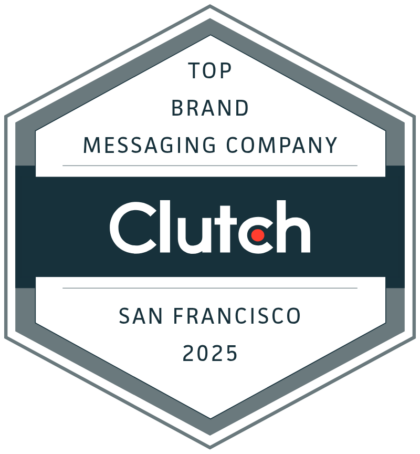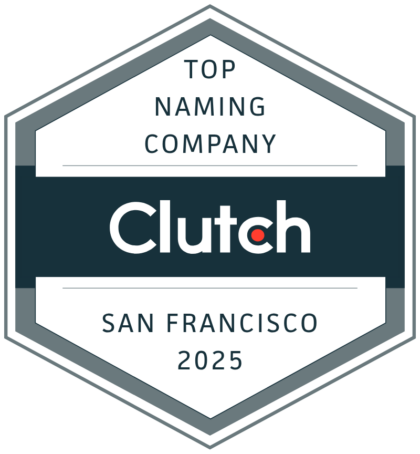The Art of Impression
Every brand exists to express what's unique about an offer. That expression happens by creating impressions. Impressions happen when ideas meet eyeballs.

David Kippen | FEBRUARY 2, 2016
IN MY LAST POST I talked about Brand Expression. To recap, Expression starts with evidence. Because every great brand helps clarify what the brand uniquely offers. People care about brands that meet an important need–and only brands that meet an important need. So we listen and observe to understand what people value the most and what the brand offers the most uniquely. As Cate Newsom described in more depth a couple of weeks ago, these insights provide what we call your brand’s “evidence base.”
The evidence base leads to the “big idea” the brand will express. This isn’t trivial. For example, Nike’s “Just Do It” – that line and campaign – increased Nike’s North American market share from 18% ($877 million) to 43% ($9.2 billion) in ten years. So, think “BIG IDEA.” If the brand is evidence-based, the creative has to start there, too. Great creative starts with great briefs: the context and evidence that shows the “big idea” is inevitable and built around a simple question, statement, insight or need. An “aha” moment. The creative team takes the “big idea” a huge step forward. And voilà! The brand’s alive. Our Executive Creative Director Amo Bassan wrote about how logic meets magic just last week.
But a great brand’s much more than a big idea. Had “Just Do It” stayed on a Post-It® in Nike’s boardroom, sales would have moved…not at all. A great brand also needs a disciplined system of value that engages people in different ways at different times. There’s no “one-size-fits-all” recipe, so this system requires documentation that can be used in real time to move the brand forward. So what to do…
Our solution has two essential parts. The first is to develop a brand playbook, one that arranges the brand’s equities, differentiators and key messages by audience and sales stage to support the brand’s purchase funnel and shape the brand’s marketing mix. (You can listen to these posts on Express, our podcast, if you prefer. Click on the cloud logo in the upper right corner of this page.)
Get Noticed
So that’s Expression: figure out the big idea, understand the target, shape the message, decide and document what your goals and objectives are and create a playbook. Now you’re ready to start gathering impressions for your brand.
If it were any time before the late ‘90s, you’d turn that good work (and some budget parameters) over to a media planner, they’d do some negotiating, create a media plan, review it with you, and, once you’d signed off, buy it for you. (Because, of course, they’d be your agency of record, or AOR.) That done, your agency would start producing art to fit the specs of the insertion orders (I/Os) your media plan specified, and your agency leads would start taking you to expensive meals at very nice venues. (Back in the day, agencies made a lot of money buying media – on average, about 15%. So surely they’d buy you a nice meal or two.) There are many reasons that model worked for so long, but chief among them was the fairly tight monopoly media buyers and agencies shared on available media. Because until recently, there was a finite number of full-page ads, column inches of ads, seconds of advertising available in print, radio and television for sale every month.
That’s different now, of course, But what’s important to recognize about this distant history is that while most everything’s changed to some degree or other, many elements of this model are still with us. Whether the QWERTY keyboard was created to slow typing so early typewriters wouldn’t jam or not, it’s inefficient—and it’s still with us today. Paid media? Same.
Your Media Mix
But here’s a thought. Rather than considering paid media first – which many do, probably because it’s been around longest – we’d argue that paid media should be considered last, and to fill gaps, not for blanket coverage.
Owned Media
Where do you start? First, you’ll want to look at the end of the customer journey at “owned media.” Owned media are just what they sound like. They’re media you own. For most businesses, owned media are at least the main company website, which often serves as either the virtual store, or the virtual product/service menu. If, as I suggested earlier, brands exist to make people take selective action, your website(s), your physical location(s), your display/product locations and your event locations are where that action happens. And while you might not think of an event or a store as “media,” they’re delivering impressions, so they’re media.
And that idea doesn’t stop at attractive décor. For most companies, the workforce is a key ingredient in this mix. Earlier, I talked about how employees delivering The Ritz-Carlton’s “Gold Standards” is a core part of the brand’s promise. That’s true, but it’s not just true of high-end luxury. From the detailed, personal ways of working in Starbucks “Green Apron Book” to the focus on “customer obsession” that anchors Amazon’s Leadership Principles, virtually every great brand relies heavily, even obsessively, on the workforce to deliver a branded experience. This is true even for ingredient brands (brands that make components of other brands), though how they deliver that experience is a bit more remote. Intel, for example, has built both their internal and external positioning around the idea that they—their people and products – are sponsors of tomorrow.
So we consider the workforce – and the employer brand, which we’ll talk about later—as essential components of your brand’s owned media. During research and playbook development you’ll have clarified the work each of them should be doing for your brand. Optimize these first. Before spending any time or money driving traffic toward your owned media, your first priority is ensuring that they deliver both the right experience and the right messages to your target audiences. And if they’re not delivering on your brand’s differentiators you must fix them first. (Why would you drive traffic to an empty or shabby store?)
Earned Media
Earned media used to refer to coverage your brand received from sources it didn’t pay for. (Think of the restaurant reviews in your local paper, for example.) Today, the term’s been extended to any media in the public domain you don’t pay for, but curate and benefit from. So, for example, your corporate Facebook page(s), Twitter, Instagram, Pintrist account(s), YouTube channel, Periscope, channel – the list is endless and growing longer every day. Your business strategy will align better with some channels than others, so once you have your owned media aligned with your brand objectives, the next step is to develop an earned media strategy. This includes social, content you create, like whitepapers, PR and anticipated event coverage – with clear objectives and KPIs for each channel, segment and event.
If we were still in the early days of social media, this would be where we talked about how social media is a conversation, not a broadcast platform; how important it is for the brand to be authentic and consistent; how dangerous it is to be unresponsive to social channels once your brand is socially present, and so on. But that’s so 2010. Today, we talk about leading the conversation (instead of joining it) and point to painful social fails as cautionary tales.
I’m fairly sure nobody’s got this fully figured out. All too often, an agency that does great work for one client ends up on the “oops” list for another. And that makes sense. What we’re talking about when we talk about social is nothing less than “most of us,” and people are complicated. So think of social as your brand on the subway. Maybe no one is looking at you. But everyone’s listening. So it’s a great opportunity to meet folks, get noticed and make impressions.
Paid Media
There are two reasons to look at paid media last. The first is that it’s probably the easiest media to master, because someone else (a media agency or your ad agency) is doing all the leg work. Do it first and it can easily become a crutch. And you’ll spend too much. The second reason, the more important reason, is that if you look first at owned and earned media, you’ll be far more likely to come to the discussion of paid media with very clear goals and objectives. Rather than saying, “what can paid media do for my brand?” you’ll say, “can paid media reach these four key demographics in these five locations I can’t build a bridge to with owned and earned?” For almost any query you can think of, the answer will be “yes, we can get your message in front of that target.” Enter the media plan, the media buy, the insertion order …
But wait. Before hauling off to do a media buy, there’s another vital consideration, namely, how your media work together. You see, while you might imagine you’d want all media to take people to your website, in most cases, you probably don’t. You’re probably much better off developing an integrated strategy across media platforms, one that aligns with the stages of awareness, need and desire we call the brand ladder.
From a campaign standpoint, you’ll want audiences who have never heard of your product to hear about it, again and again, until it has a place on their mental dashboards. Depending on your brand’s goals, this can take an almost infinite variety of forms, from obnoxiously, bluntly repeating one message across all channels to humorously introducing solutions to embarrassments you didn’t know you could address and everything in between. You might point this work at a particular channel. Yes, this channel might drive traffic to your website or store, but its real job is to spread the word—and the awareness. Once audiences have a reasonable level of awareness (clarity), you’ll often need to establish relevance. That is, to demonstrate that the product, service – whatever it is—solves a problem relevant to your target demographic. While there are countless ways to do this, the easiest example to bring to mind is the infomercial. No matter the product, the pitch is the same: this product is relevant to your need.
Each subsequent rung of the ladder – resonance (your brand aligns with my needs); differentiation (there’s something I can only get from your brand) and finally, energy (I want to take action…now!) – may be better served by different media or by a different media mix. So each element of your media plan – owned, earned, and paid – may have several unique jobs to do in supporting your brand.
Measure It!
The final step in mastering your media mix is seeing what happens when you release it into the wild. We once had the opportunity to speak to a number of great chefs for a client project. During the course of our conversations, we asked “what’s the difference between a great cook and a great baker?” We were told that a great baker is able to consistently make something the same way, while a great cook consistently brings the best out of the particular ingredients she cooks with. If this is true, developing a great media mix is a lot more like cooking than baking. Every campaign, every audience, every execution has specific nuances that come together at a particular moment in a particular place. What looked great on your designer’s monitor might look great backlit in an indoor mall but get totally lost on the side of a building.
Measurement is to media as tasting is to cooking. It’s best done often, and by people who know how to cook and can tell the difference between something being “not done yet” and “just not right.” Because each medium offers different metrics – and often, different sample times and sizes – you should plan to spend nearly as much time planning your measurement strategy as you spend planning your media. If you do, you’ll be able to make adjustments across channels in real time and optimize the effectiveness of your campaign against campaign targets.
There’s clearly more to gathering impressions than I can cover in a single post. So my colleagues at Evviva will devote the next few weeks to a closer look at each of these topics. Next week, Stephen will double-click on media plans. Then Amo will show you how concepts go from big ideas to insertions with a specific job to do. Then finally, at the end of the month, Cate will share how we refine and retarget subsequent media activities, refine the assumptions in our strategy at a campaign level and at a brand level (where needed), and how campaign activities increase brand value.
Dr. David Kippen serves as Chief Strategist and CEO of Evviva Brands. With a background spanning advertising and communications and a client base spanning the globe and including top brands in every sector, Dr. David Kippen is a world-renowned leader in brand strategy. David’s past clients include Amazon, Ameriprise Financial, Bain & Company, Blackrock, Burger King, Chevron, Coca-Cola, Dell, Dignity Health, Disney, Energy Recovery, E.ON, HP, HSBC, General Mills, Intel, Kaiser Permanente, Kentz, KLA-Tencor, Lam Research, Marriott International, Methanex, Moss Adams, Microsoft, Nokia, Premera Blue Cross, Teva, T-Mobile and Xilinx.
David earned a PhD in English (rhetoric) from the State University of New York at Stony Brook. Prior to founding Evviva Brands he was Head of Global Brand Strategy for TMP Worldwide.
Phone: (415) 320-9777
Email: kippen@evvivabrands.com
Image credit: freeimages




















